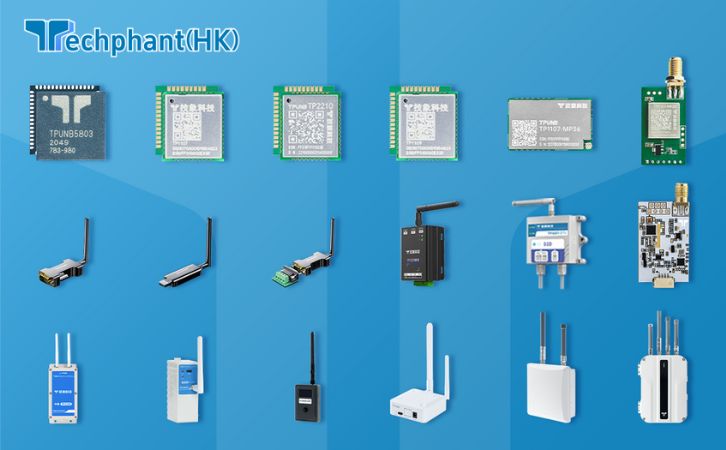Fire detection systems have long been critical for protecting lives and property, but traditional systems often rely on standalone sensors with limited connectivity and responsiveness. The integration of Internet of Things (IoT) technologies has revolutionized early warning systems, enabling real-time monitoring, intelligent data processing, and seamless communication across devices and networks. IoT-enabled fire detection systems leverage advanced sensors, low-power protocols, and cloud connectivity to detect fires faster, reduce false alarms, and facilitate rapid response. This article examines how IoT is transforming fire detection, exploring its technical underpinnings, applications, challenges, and future directions.
I. Technical Foundations of IoT Fire Detection Systems
IoT-enabled fire detection systems rely on a combination of advanced sensors, communication protocols, and data processing capabilities. Sensors, such as smoke, heat, carbon monoxide (CO), and gas detectors, form the backbone of these systems. Modern IoT sensors, like the Bosch BME680, integrate multiple sensing capabilities (e.g., temperature, humidity, VOCs) into a single low-power chip, consuming less than 3 mA in active mode. These sensors are deployed in networks, often using low-power wide-area network (LPWAN) protocols like LoRaWAN or NB-IoT for long-range, energy-efficient communication.
LoRaWAN, operating in sub-GHz bands (e.g., 868 MHz in Europe), supports ranges up to 15 km in rural areas with data rates of 0.3–50 kbps, ideal for remote installations like warehouses. NB-IoT, a cellular-based protocol, offers deep indoor penetration and data rates up to 250 kbps, suitable for urban environments. Messaging protocols like MQTT (Message Queuing Telemetry Transport) enable sensors to publish data to a central broker, which relays alerts to cloud platforms or emergency systems. For example, a smoke sensor might publish a “fire/detected” topic with QoS 1 for guaranteed delivery. Edge computing on gateways or Customer Premises Equipment (CPE) processes sensor data locally to reduce latency, while cloud platforms like AWS IoT Core enable real-time analytics and integration with emergency response systems.
II. Applications in Smart Buildings and Beyond
IoT fire detection systems are transforming safety across diverse environments, from smart homes to industrial complexes. In smart buildings, IoT sensors integrated with building management systems (BMS) provide comprehensive monitoring. For instance, a high-rise office might deploy LoRaWAN-based smoke and heat sensors across floors, with a CPE aggregating data and triggering alarms, sprinklers, or evacuation alerts via MQTT. These systems reduce response times by sending real-time notifications to facility managers and fire departments, often within seconds of detection.
In smart cities, IoT fire detection supports urban safety. Sensors embedded in public spaces, like parking garages or tunnels, monitor environmental conditions and transmit data via NB-IoT to centralized systems. For example, Singapore’s Smart Nation initiative uses IoT sensors to detect fires in public housing, integrating with 5G networks for low-latency alerts. Industrial applications include warehouses and factories, where IoT systems monitor flammable materials using gas sensors, with edge analytics distinguishing between normal operations and fire risks to minimize false alarms. In rural or forested areas, LoRaWAN-enabled sensors monitor wildfire risks by tracking temperature and humidity, enabling early intervention. These applications demonstrate IoT’s ability to enhance detection accuracy and scalability across diverse settings.
III. Advantages of IoT-Enabled Systems
IoT fire detection systems offer significant advantages over traditional systems. First, they enable real-time monitoring and rapid response. Sensors can transmit data instantly to cloud platforms or local gateways, reducing detection-to-alert times from minutes to seconds. For example, a smart home system might notify homeowners via a mobile app while simultaneously alerting emergency services. Second, IoT systems improve accuracy through multi-sensor fusion, combining data from smoke, heat, and CO sensors to reduce false positives. Machine learning algorithms, often running on edge devices, analyze sensor patterns to distinguish between a fire and non-threatening events like cooking smoke.
Energy efficiency is another key advantage. LoRaWAN and NB-IoT sensors operate for 5–10 years on a single battery, using power-saving modes like NB-IoT’s PSM, which consumes less than 5 µA in sleep mode. Scalability is also enhanced, with protocols like LoRaWAN supporting thousands of devices per gateway, ideal for large buildings or campuses. Integration with smart systems, such as automated sprinklers or voice assistants, enhances user experience. For instance, an IoT gateway might interface with Amazon Alexa to provide voice alerts during a fire. Finally, cloud-based analytics enable predictive maintenance, identifying sensor malfunctions before they compromise safety.
IV. Challenges and Limitations
Despite their advantages, IoT-enabled fire detection systems face several challenges. Sensor reliability is critical; environmental factors like dust or humidity can trigger false alarms or degrade sensor performance. Calibration and maintenance of thousands of sensors in large deployments require automated solutions, increasing complexity. Network reliability is another concern; LoRaWAN’s unlicensed spectrum is prone to interference in urban areas, while NB-IoT depends on cellular coverage, which may be limited in remote regions as of 2025.
Security is a major challenge, as IoT devices are vulnerable to cyberattacks. A compromised sensor or gateway could send false data or disable alerts, as seen in past IoT security breaches. Implementing robust encryption (e.g., AES-128 for LoRaWAN, TLS for MQTT) on low-power devices increases energy consumption, potentially shortening battery life. Interoperability also poses issues, as devices from different vendors may use proprietary protocols, complicating integration. Standards like Matter aim to address this, but adoption is ongoing. Finally, cost remains a barrier; deploying IoT systems with advanced sensors and gateways can cost thousands of dollars for large buildings, limiting adoption in budget-constrained settings.
Conclusion
IoT-enabled fire detection systems are revolutionizing early warning capabilities, leveraging advanced sensors, low-power protocols like LoRaWAN and NB-IoT, and intelligent data processing to enhance safety. Applications in smart buildings, cities, and industrial settings demonstrate their ability to deliver real-time alerts, reduce false alarms, and integrate with broader safety systems. Advantages like energy efficiency, scalability, and predictive analytics make IoT systems a significant improvement over traditional detectors. However, challenges such as sensor reliability, network security, and interoperability require ongoing innovation in hardware, protocols, and standards. As technologies like 5G, AI, and energy harvesting advance, IoT fire detection systems will continue to evolve, offering faster, more reliable, and sustainable solutions to protect lives and property.



